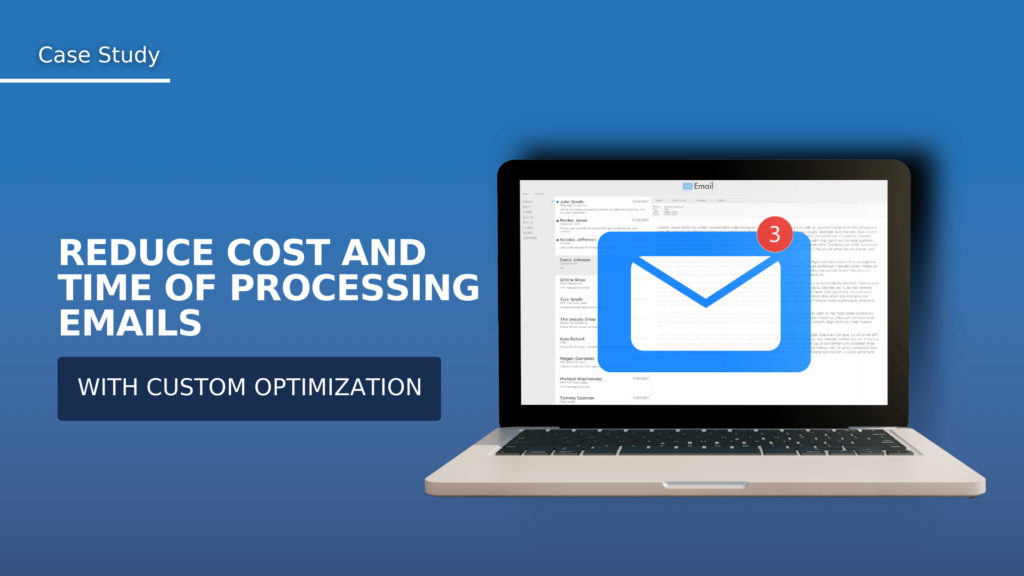Reduce cost and time of processing emails with custom optimization
Structuring textual enterprise
data to solve real-life problems
with uncompromised quality.
Sienkiewicza 40a 15-004 Białystok Poland
sales@bluerider.software
+48-791-963-658

BACKGROUND
The client approached us with critical issues in his application that the previous development team could not resolve. These issues primarily revolved around the processing of user emails, a core feature of the application. Specifically, users experienced significant delays in receiving notifications confirming that their emails had been reviewed. Furthermore, the previous solution proved costly and inefficient, resulting in excessive expenses during the development phase. The email processing relied on modern AI technology to extract information from email messages.
The client sought our expertise to streamline the operation’s time and cost efficiency, ensuring scalability and maintaining a high-quality user experience.
IMPACT
The primary objective was to decrease the time required for scanning operations and minimize the associated costs, all while upholding the high quality of the scanning process.
OBJECTIVES
Understanding the client’s requirements, we conducted a thorough analysis of the entire process to identify the root cause of the problem. Drawing on our experience, we recognized opportunities for optimization. Our initial target was to achieve a minimum 30% reduction in both time and costs associated with the operation.
SOLUTIONS
We had to face two problems. Classification of email titles and extraction of information from the content of emails
For the first problem. We fine-tuned an AI model for email titles classification, aimed at speeding up the process of checking emails in the application. The model learned from a broad set of generated data and real-world data to differentiate email titles. The model was deployed on a secure cloud platform, ensuring scalability and availability of the service at all times.
And for the second. We used the latest available large language models and prompt engineering to extract information from the email content. Our solution allows us to quickly extract structured data in json format for further processing
1.
We initiated an in-depth analysis of the implementation to uncover the underlying cause of the problem. Given the complexity of the operation, comprised of multiple steps, a comprehensive investigation was required
2.
Once we identified the root cause, we presented our findings to the client, enabling collaborative decision-making regarding the subsequent optimization steps. Together, we determined the most effective approaches to pursue
3.
Subsequently, we focused on optimizing the AI-driven processing, which relied on two LLMs to extract essential data. Through extensive research, we identified and replaced outdated models with newer, more efficient, and cost-effective alternatives. One of these models, developed and deployed by us, was hosted on a secure cloud platform, leveraging the advantages of in-house models in terms of speed and security
4.
Our next step involved refactoring the application code responsible for these operations. Upon completion of this process, we conducted a thorough comparison between the old and new solutions.
„ Following the comparison, we found that our initial assumptions regarding a 30% reduction in both time and costs were not only met but even exceeded ”
OBJECTIVES
We have accomplished significant enhancements in both time and costs associated with the operation. Initially, users experienced waiting times of a few minutes to receive feedback on their scanned emails. Following our adjustments, this waiting period was reduced to approximately 40 seconds, indicating an implementation that is at least three times faster.
Moreover, we successfully reduced the operational costs, resulting in a significant 50% saving for the client (with the assumption of specific user numbers in the application). These improvements were instrumental in ensuring that the application remains fully scalable and relatively inexpensive to maintain in the long run.